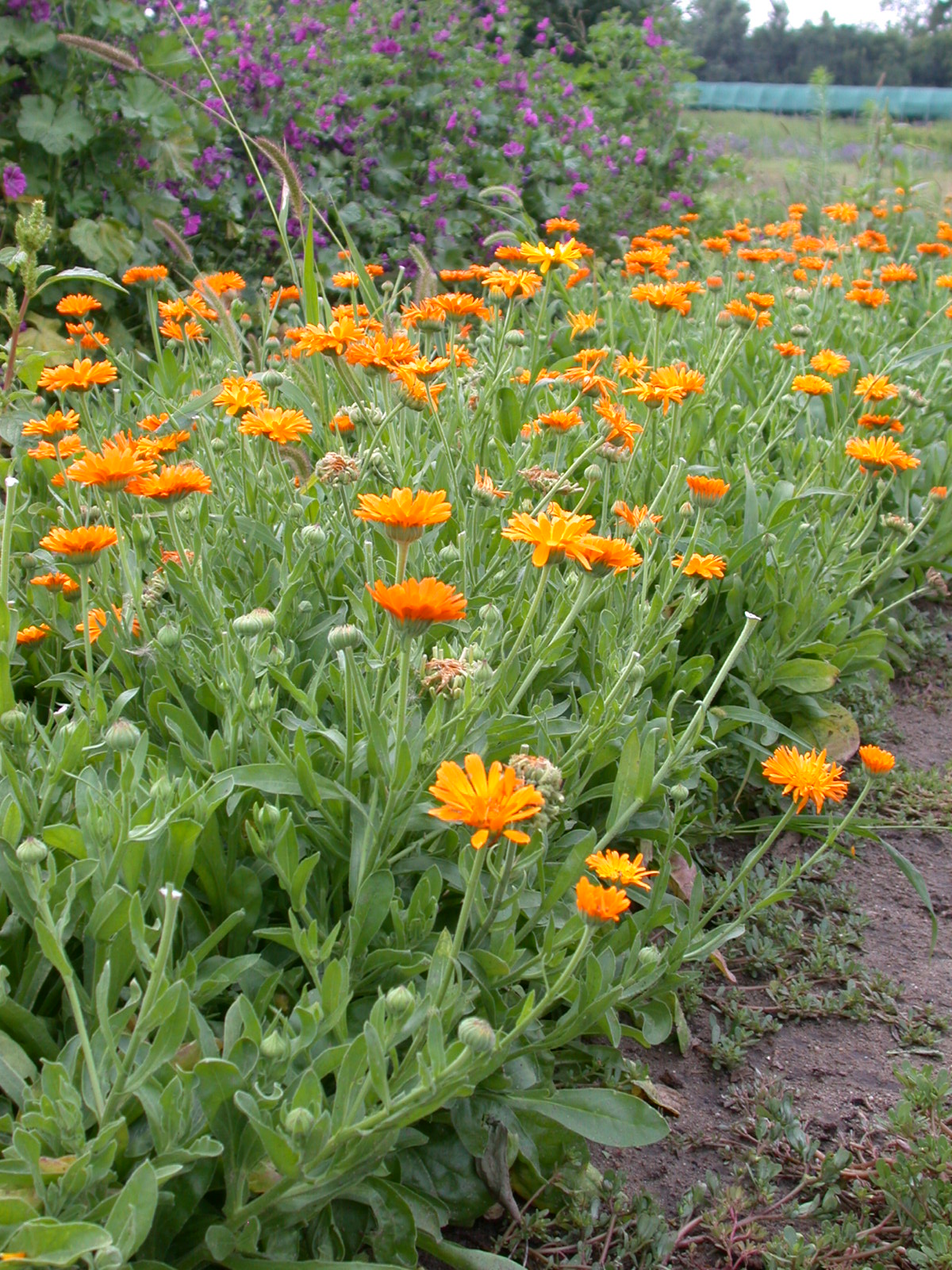Calendula officinalis L. – Pot marigold, common marigold

Calendula officinalis is a herbaceous, annual plant belonging to the Asteraceae family/ Asteroideae subfamily (Th). The plant is 40-60 cm tall with branched stems; the roots are pale-like. The leaves are oblong, lanceolate, slightly serrulate. Marigold has solitary terminal inflorescences with 3-6 cm diameter, the disc florets have an intense orange-yellow colour. The fruits are thorny curved achenes, thousand seed weight: 8-12 g.
Calendula officinalis is native to the coasts of Mediterranean Sea and the Western part of Asia. In Europe it is cultivated since the 12th century. In Hungary marigold is also a popular medicinal, ornamental and dyeing plant, cultivated in the whole country. It can be grown easily in sunny, warm places in most kind of soils. Marigold has a high drought tolerance, too.
Marigold’s drug is the chopped or whole flowers separated from the receptalces, harvested in full flowering (Calendulae flos). It is mentioned in Hungarian Pharmacopoeia VIII. and in ESCOP- and E-monographs as well. To meet the standards of the pharmacopoeia, the drug should contain 0.4 % flavonoid (hiperoside).
The main active substances of Calendula officinalis are water soluble flavonoids (0.04-0.10 %) and lipophilic, yellow-orange carotinoids (3 %, beta-carotene, luteine). Furthermore the plant contains saponins, sterols, essential oil (0.1 %, major component is alfa-cadinol) and polisaccharids (15 %). The fruits of marigold have high fatty oil content with calendic acid as main compound.
The water extract of the herb is immunstimulant, anti-inflammatory, antibiotic, bactericid, antiviral. Internally, as a tea, it is consumed for curing gastric and duodenal ulcers. The oil extract of marigold has an epithelising, skin regeneration stimulating effect. Externally, it used for healing wounds, varicose veins, skin lesions. The cold-pressed fatty oil of the fruits have anti-inflammatory effect as well. In organic horticulture marigold is planted to keep away nematodes and the extract of the plant is used for its mollucicide and allelopathic activity.

